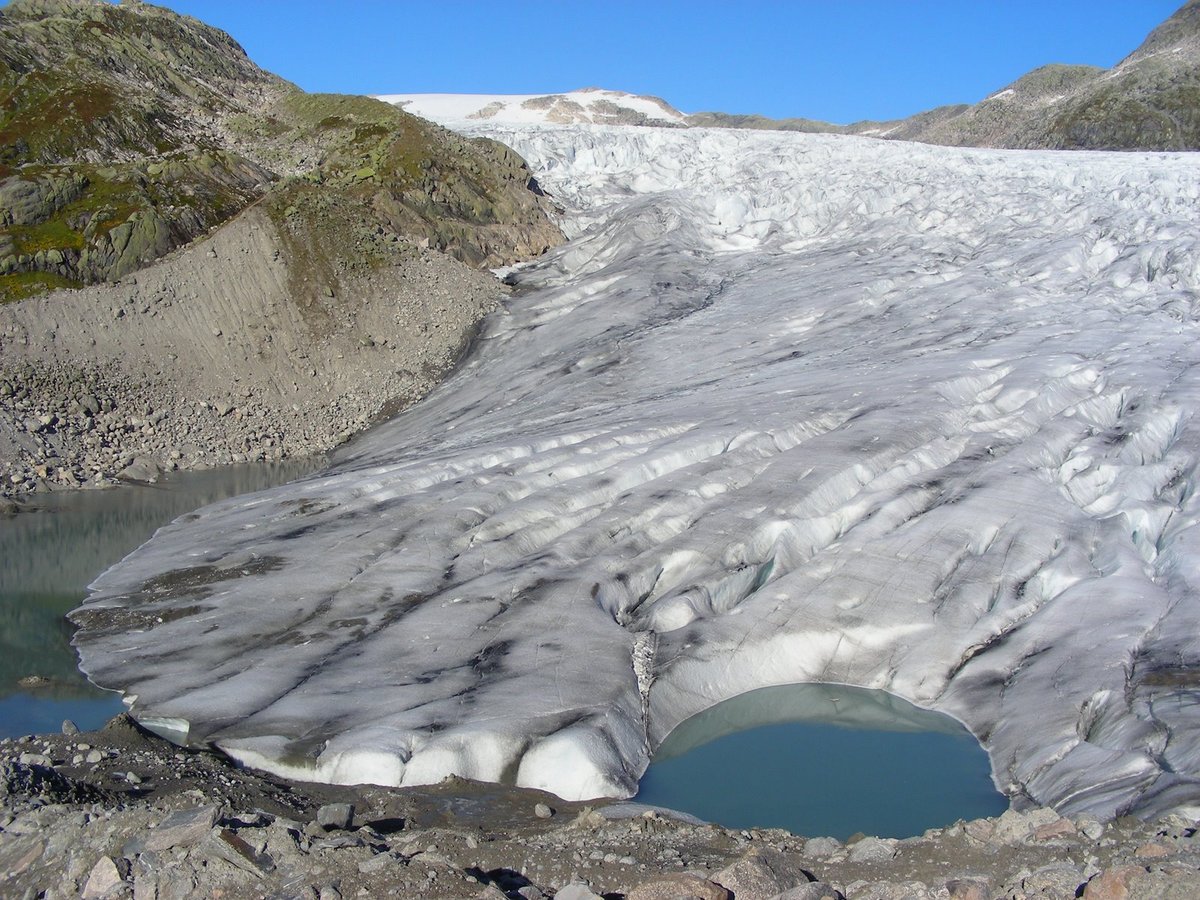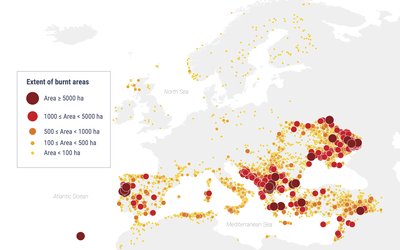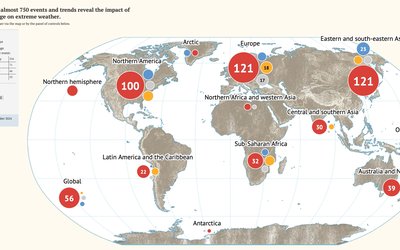Ice loss from glaciers in Central Europe since 2000 almost eight times the global average
April 29, 2025

Photo credit: NASA/GSFC/Kimberly Casey (www.flickr.com)
Global ice loss
In 2000, glaciers, excluding the ice sheets of Greenland and Antarctica, covered a global area of approximately 706,000 km2 with an estimated total volume of 158,170 km3. This volume is equivalent to a potential sea level rise of 324 mm.
Recently, many experts from around the globe joined efforts to update the global glacier mass loss changes. They combined their data and expertise and ensured that their data are mutually comparable. Their exercise revealed that from 2000 to 2023, glaciers worldwide lost about 5% of their ice. This is a loss of 273 ± 16 gigatonnes in mass annually. This loss increased by about 36% from the first (2000–2011) to the second (2012–2023) half of the period. The period 2019–2023 includes the 4 years with the largest annual ice loss of more than 400 Gt per year. The largest loss was recorded in 2023: 548 ± 120 Gt.
Glacier mass loss was about 18% larger than the loss from the Greenland Ice Sheet and more than twice that from the Antarctic Ice Sheet.
Regional differences
All world regions experienced glacier mass loss from 2000 to 2023. Glacier loss differs from one world region to another. Since 2000, glaciers have lost between 2% and 39% of their ice regionally.
The largest regional contributions to global glacier mass loss are from Alaska (22%), the Canadian Arctic (20%), peripheral glaciers in Greenland (13%), and the Southern Andes (10%).
The glaciers of Central Europe, including the Alps and the Pyrenees, showed the largest relative ice loss of all regions: a loss of almost 39% from 2000 to 2023. A slowdown of mass loss was found in Iceland and Scandinavia, because of regional cooling and an increase in winter precipitation.
Sea level rise
The observed global ice loss from 2000 to 2023 contributed 18 ± 1 mm to global sea level rise in this period. In the first two decades of this century, melting glaciers contributed 20% to the observed global mean sea level rise. The contribution by changes in ocean temperature and salinity was larger (33%) and the contribution of the Greenland Ice Sheet was smaller (17%). Smaller contributions originate from changes in land water storage and the Antarctic Ice Sheet.
Compared with IPCC reports
The data on ice loss in this update are a few percent less negative than estimates in the latest IPCC reports. However, the experts stress that “we are facing continued and possibly accelerated mass loss until the end of this century”.
Source: Zemp et al., 2025. Community estimate of global glacier mass changes from 2000 to 2023. Nature 639: 382-388.








